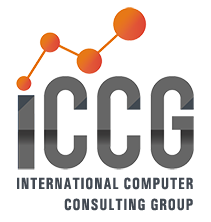The fact is managed services are on the rise and in high demand by customers worldwide—and, with good reason. They are an ideal way for customers to get the on-demand expertise they need at a predictable cost. With Infor Managed Services, our goal is to provide customers the long-term support and post-go-live services that coincide with the double-decade lifespan they expect from their Infor application investment.
Read More
Topics: Digital Transformation, ERP, Manufacturing, Food & Beverage, Webinar, Process Manufacturing, Artificial Intelligence, Fashion PLM
Digitizing core processes in combination with trading partner connectivity, helps supply chain leaders increase responsiveness and adaptability. As more organizations look to remove manual tasks from their operations, the ability to update suppliers and trading partners in real-time allows supply chain processes to become more efficient. Here are three scenarios where moving to a network platform have helped companies generate additional value across their supply chain.
- A footwear provider experiencing rapid growth realized spreadsheets and manual processes were no longer sufficient to support increase demand and future progression. The brand digitally transformed sourcing, procurement, accounts payable, finance, and supplier management processes to support scale. The ability to digitally collaborate on orders, invoices, settlements, and ASN creation was foundational to the transformation. Witnessing 4X growth, the company today has 99.8% invoice accuracy and spends approximately 30 minutes per day processing invoices.
- A major global sports apparel brand sought to solidify the health of its supply base by ensuring access to capital. Utilizing a multi-enterprise network allowed the company to connect all parties and digitized document flow, enabling automated financing and settlement. A diverse portfolio of finance providers was plugged in to create a significant pool of credit and programs to meet varying needs. In doing so, the brand was able to enhance the financial health of its suppliers while deploying its own capital preservation program.
- An outdoor gear manufacturer having automated its PO, invoice, and settlement processes to generate efficiency was seeking further avenues to improve margins. It leveraged existing transaction data to auto-populate ASNs and packing and shipping instructions, enabling direct shipments from the factory. As a result, plans for new distribution center were deemed no longer necessary due to increased efficiency.
Read More
Topics: ERP, Manufacturing, Distribution, Rentals & Equipment, Supply Chain, Fashion & Apparel, Infor M3 ERP, Enterprise Software, Retail Supply Chain, WMS, Supply Chain Management
Know you want to transform but don't know where to start? Want to gain $9-12 for every dollar you spend? Read on to find out why starting with your people is the best first step to prioritizing digital transformation projects.
Digital transformation is at the top of the to-do lists of most companies, but one topic that is often missing from a discussion on digital transformation is which areas to prioritize. Most businesses can’t afford to completely overhaul a core function of the enterprise top to bottom, along with the technology that supports it, at any one time. Instead, they’ll target specific areas for transformation. That approach minimizes disruption to the business, keeps costs manageable, and helps the business apply lessons learned to future transformation projects. The question, though, is which areas to target first?
Read More
Topics: Digital Transformation, ERP, Manufacturing, Distribution, Rentals & Equipment, Supply Chain, Fashion & Apparel, Industrial Manufacturing, Digital Manufacturing, Infor M3 ERP, Enterprise Software, Retail Supply Chain, WMS, Supply Chain Management
Supply chain disruptions caused by black swan events are by nature unforeseeable events that can be utterly catastrophic. Due to their destructive potential, these unfortunate events justifiably draw attention to how critical supply chains are to sustaining business success and essential daily functions. Unfortunately, they also draw attention to how vulnerable supply chains tend to be when faced with sudden adversity.
Studying the kinds of companies that can weather such catastrophes provides many key lessons about how enterprises can implement resiliency solutions and strategies to respond to, and mitigate, the deleterious effects of a black swan event.
There are four key steps enterprises can adopt to ensure that they are able to respond and react with the flexibility needed to minimize the impacts of black swan events and the “ripple” of disruption occurring at numerous levels of magnitude.
Read More
Topics: Manufacturing, Distribution, Supply Chain, Warehouse Management Systems, Enterprise Software, WMS, Supply Chain Management
The average lifespan of assets in the chemicals industry has increased over time, and as a result, the associated maintenance work has significantly increased along with it. As per some estimates, 50% of fixed costs for a typical chemicals plant are the result of continuous maintenance work. This maintenance work can be classified into three categories: reactive, preventive, and predictive.
Reactive maintenance
As the name suggests, reactive maintenance is performed after something breaks down. When a company dedicates a significant amount of its time, money, and resources to conducting reactive maintenance, the company typically “pays for it” in the form of schedule interruptions, rescheduling, lost volume/sales, lost customers, lower pricing power to attract new customers, fines and charges, etc. While cutting maintenance costs may look profitable, a complete assessment of all side effects would likely prove otherwise. In fact, the total cost of reactive maintenance can turn out to be two to three times higher than a preventive maintenance approach.
Read More
Topics: Manufacturing, Chemical, Supply Chain, Chemical & Life Sciences, Enterprise Asset Management, CloudSuite
For years, digitization has been considered an optional strategy by many companies, thus resulting in static and disconnected buyer-supplier collaboration points across supply chains. For many organizations, processes continue to be highly manual across fragmented systems, resulting in inefficient, error prone workflows.
Reliance upon Excel®, email, and phone calls remains common across a staggeringly significant amount of business, thereby resulting in delays, non-compliance, and friction between buyer and seller. Time and resources lost synchronizing simple concepts like purchase order confirmations, negotiation, documentary compliance, and invoice approvals cripples flexibility and agility, all while locking up millions, if not billions in working capital.
Anywhere paper or manual processes exist a lack of visibility follows, leaving missed opportunities to harness real-time supply chain data that optimizes decisions and mitigate risks.
Read More
Topics: ERP, Manufacturing, Distribution, Rentals & Equipment, Supply Chain, Fashion & Apparel, Infor M3 ERP, Enterprise Software, Retail Supply Chain, WMS, Supply Chain Management
When it comes to ensuring supply chain health, there are three key approaches your organization can do to improve processes and build resiliency into your network. Not only will this help you minimize uncertainty during times of disruption, it will also help streamline improvements during times of prosperity.
Supply chain essential #1: Digital documents, data, and settlements
Companies must focus on network connectivity and process automation to drive agility and responsiveness while continually investing in predictive and proactive sense and respond capabilities.
Economic sustainability includes multiple key components starting with digital connectivity and collaboration as the digitization of documents and workflows enables speed and agility. Multi-enterprise collaboration enables strategic programs such as providing suppliers access to capital through a multi-bank network. This helps the entire supply chain endure dynamic liquidity shortages that often stem from a crisis and a period of economic recovery.
Read More
Topics: ERP, Manufacturing, Distribution, Rentals & Equipment, Supply Chain, Fashion & Apparel, Infor M3 ERP, Enterprise Software, Retail Supply Chain, WMS, Supply Chain Management

Judging by the headlines, continuous logistics issues, continued pandemic restrictions, and rising prices for raw materials will mean that manufacturers have their work cut out for 2022. In addition, the drive towards sustainability is adding pressure to readjust the manufacturing footprint. Most manufacturers are still stuck with a geographic footprint, which was driven by labor arbitrage around the globe, rather than by factors such as closeness to customers or ecological concerns.
To increase efficiency, many producers have started to implement Industry 4.0 technologies. Industry 4.0 came with the promise of a smart factory being profitable at the production lot size of one unit. The concept was introduced at the brink of the millennium change with the introduction of cyber-physical systems to share, analyze and guide intelligent actions for various processes in the industry to make the machines smarter and to lower downtime. Analytics can also be used for other aspects like logistics, demand forecasts, production scheduling and quality control, capacity utilization and efficiency boosting.
But we still stand at the beginning for leveraging the true potential of Industry 4.0. Smart technologies offer no less than the possibility to redesign the global manufacturing footprint, to position factories closer to markets, reduce logistics nightmares and increase visibility of the ecosystem partners, including suppliers and customers.
Read More
Topics: ERP, Manufacturing, Industrial Manufacturing, CloudSuite Industrial, Digital Manufacturing, Industry 4.0, Industrial Revolution, Infor Cloudsuite Industrial, CloudSuite Equipment, Infor CloudSuite ERP
The competitive landscape of the wholesale distribution industry is fiercer than ever before. With brand-new, internet-based distributors of all sizes seemingly popping up as quickly as mergers and acquisitions are building new distribution powerhouses, the competition just keeps getting more intense. Adding to the mix are an increasing number of manufacturing companies that are selling direct to retailers and offering online shopping options for consumers, bypassing distribution companies entirely. And let’s not forget the impact big box stores and e-tailers can have on the distribution channel as they leverage their purchasing power, large retail networks, and extensive B2C experience.
Of course, no discussion about distribution competition is complete without addressing the elephant in the room, Amazon® Business. With the ability to sell millions of SKUs with flexible shipping options at low price points, Amazon is setting a high bar for customer expectations. Amazon is very good at responding to how buyers buy today by offering a powerful customer experience that uses modern technologies, such as artificial intelligence (A.I.) and data science.
Read More
Topics: Manufacturing, Distribution, Supply Chain, Warehouse Management Systems, Enterprise Software, WMS, Supply Chain Management
Chemicals and life sciences manufacturers like you have unique requirements when it comes to your manufacturing operations. Infor SyteLine® for Chemicals is built on 30 years of manufacturing solution expertise and a Process Industry Pack, making it easy to adjust formulas, build batches based on exacting manufacturing specifications, and monitor and respond to the evolving regulatory environment.
Flexible formula management
Process manufacturers like you need a formula management system that helps develop formulas that account for factors like solubility and total yield. You need a system that has the flexibility to resize formulas to produce batches based on percentages, not quantity amounts. Infor® SyteLine for Chemicals provides the unique materials management and product customization functionality you need.
Read More
Topics: Manufacturing, Chemical, Supply Chain, Chemical & Life Sciences, Enterprise Asset Management, CloudSuite











